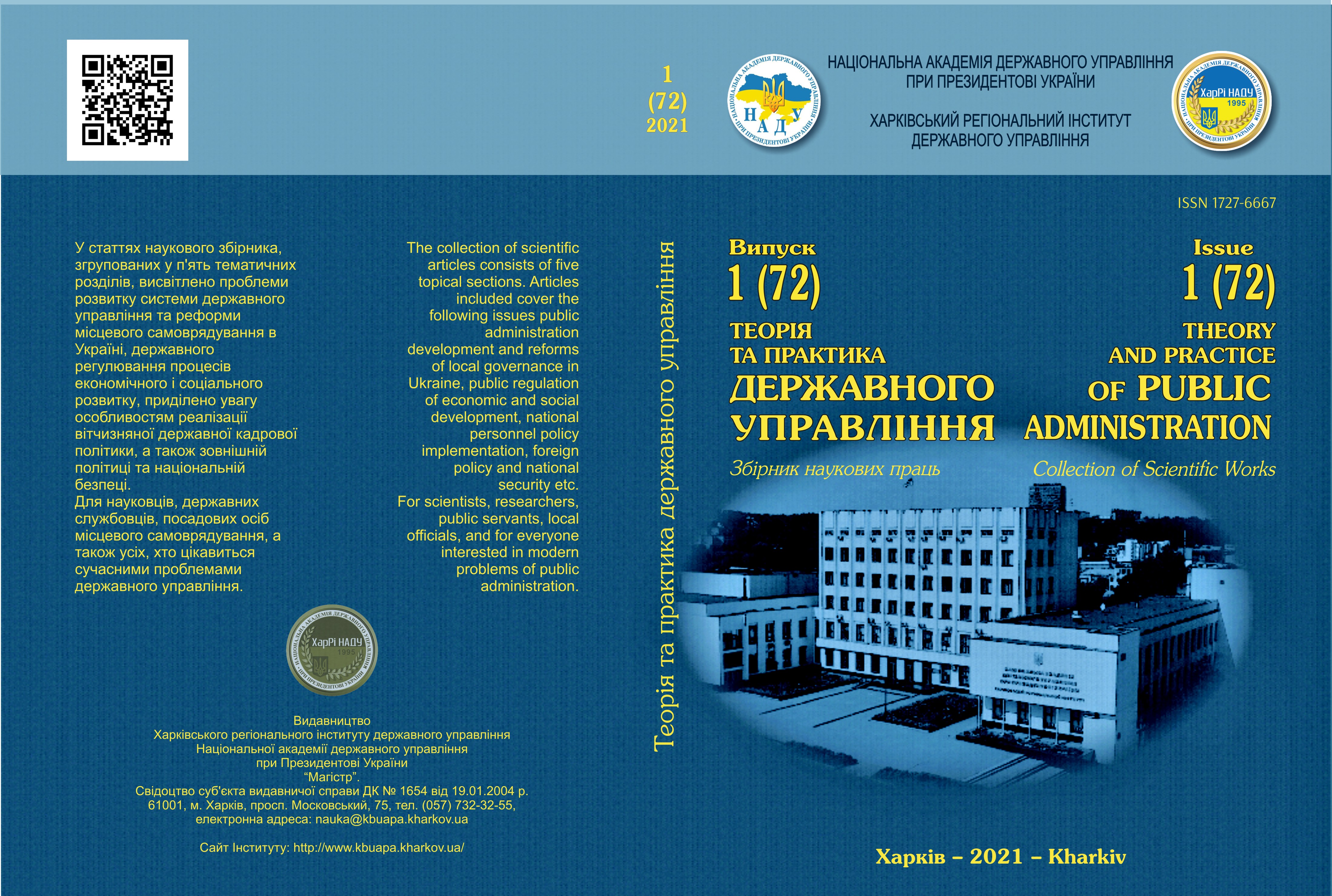USING THE CONCEPT OF PUBLIC-PRIVATE PARTNERSHIP TO MODEL THE PROCESS OF LOCAL ECONOMIC DEVELOPMENT
Abstract
The synthesis of the known definitions of LED in the literature makes it possible to conclude that the concept of local development is always based on initiatives coming from the bodies of public administration, representatives of business and the public representatives.
Consideration of the LED in terms of possible approaches to its implementation allows us to conclude on the feasibility of using the concept of PPP. Such a partnership can significantly increase the efficiency and potential of the public sector without the addition of additional resources from the executive authorities. But the proposal to rely on the strategy of the LED concept PPP puts on the agenda the task of developing and optimizing the appropriate management model.
The purpose of the article is to determine the mechanisms of public administration of LEDs and to substantiate the areas of optimization of partnership projects according to the criterion of their compliance with the conditions of sustainable development.
In the research to propose the possible form of organization (model) of the PPP project in terms of its resource provision and the participation of public and private partners at each stage of the LED.
In order to determine the conditions for the effectiveness of partnerships in the LED projects, it is suggested that graphing methods be used. It is proved that the maximum possible economic efficiency of LED on the basis of the concept of PPP can be obtained under the conditions of the intersection of the curves “Project effectiveness” and “Efficiency of budget funds”. The intersection determines the ratio “Moderate budget support = Optimal cost-effectiveness.”
It is clear that if the PPP concept will be on the basis of the LED, that issue of profit for the private sector is more important than the social component. Therefore, the essence of the application of the concept of PPP in LED programs is how to determine the relationship between business and the local community, the conditions for their interaction with public administration bodies.
Downloads
References
Shandryk, V.I. (2012). Orhanizatsijno-funktsionalna model derzhavnoho upravlinnia proektom u sferi ZhKH na zasadakh derzhavno-pryvatnoho partnerstva. Aktualni problem derzhavnoho upravlinnia, 1 (49), 154–159. Odesa: ORIDU NADU [in Ukrainian].
Sharipova, E.А. (2013). Otsenka proektov HChP: prymenenye kryteryia “tsena – kachestvo” y otsenka Public Sector Comparator. Appraising PPP projects, Value for Money and Public Sector Comparator. URL: http://www.pppinrussia.ru/userfiles/%20money.pdf.
Shilepnitski, P.І. (2011). Dershavno-pruvatnogo partnerstvo: teoria i praktika: monografia. Chernivtsi: In-t reginal doslidgen NAN Ukraine [in Ukrainian].
Joint Technology Initiatives. (2008). Public – Private Partnerships in EU Research European Comission. European Communities. URL: ftp://ftp.cordis.europa.eu/pub/fp7/docs/jtis-brochure_en.pdf .
Bates, Т. (2011). Theories of Entrepreneurship Theories of Local Economic Development. Perspectives from Across the Disciplines. Richard P.Bingham, Robert Mier (Eds.). Sage Publications, 1, 48–62.
Blakely, Edward J. and Bradshaw, Ted K. (2002). Planning Local Economic Development. Third Edition. Thousand Oaks, California: Sage Publications.
Blair, P., Premus, R. Locotion Theory. (2011). Theories of Local Economic Development. Perspectives from Across the Disciplines. Richard P.Bingham, Robert Mier (Eds.). Sage Publications, 1, 132–139.
World, Bank. Local economic development (LED). Prepared by Urban Development Unit The World Bank Washington, DC. URL: www.worldbank.org/urban/led.
Authors who publish with this journal agree to the following terms:
- Authors retain copyright and grant the journal right of first publication with the work simultaneously licensed under a Creative Commons Attribution License that allows others to share the work with an acknowledgement of the work's authorship and initial publication in this journal.
- Authors are able to enter into separate, additional contractual arrangements for the non-exclusive distribution of the journal's published version of the work (e.g., post it to an institutional repository or publish it in a book), with an acknowledgement of its initial publication in this journal.
- Authors are permitted and encouraged to post their work online (e.g., in institutional repositories or on their website) prior to and during the submission process, as it can lead to productive exchanges, as well as earlier and greater citation of published work (See The Effect of Open Access).

